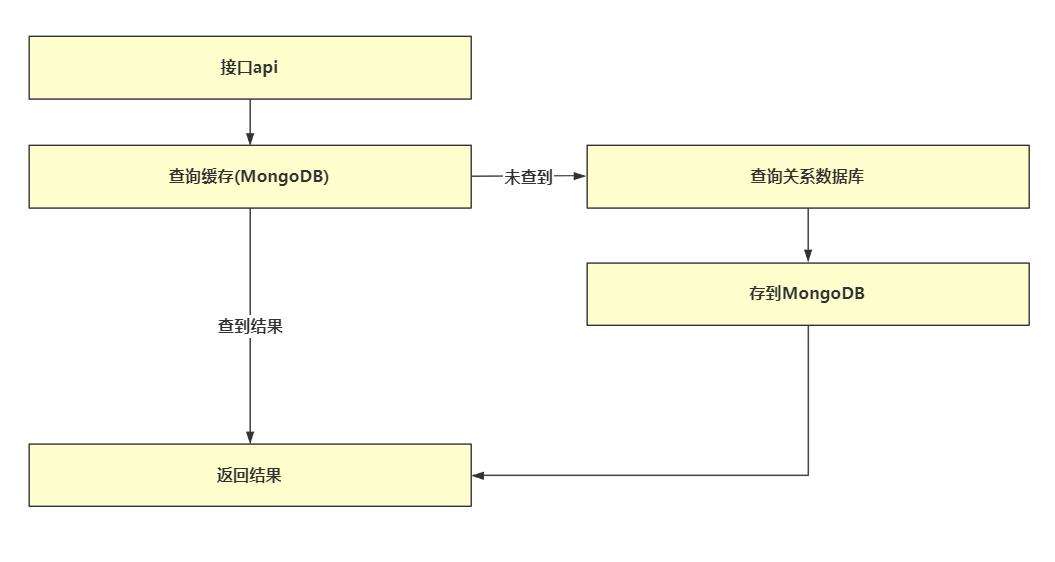springboot整合mongodb复杂查询和分页查询
Posted
tags:
篇首语:本文由小常识网(cha138.com)小编为大家整理,主要介绍了springboot整合mongodb复杂查询和分页查询相关的知识,希望对你有一定的参考价值。
参考技术A 需要用到BulkOperations,参考官方文档https://docs.mongodb.com/manual/core/bulk-write-operations/
备注:BulkOperations.BulkMode.UNORDERED 和 BulkOperations.BulkMode.ORDERED的区别:
UNORDERED是平行处理,即使某条记录出错了,其余的也会继续处理;
ORDERED是队列排序处理,只要中途有个失败了,那么后续的操作流程就会终止了。
SpringBoot整合MongoDB(实现一个简单缓存)
目录
前言
SpringBoot是常用开发框架,而MongoDB也是最近越来越火的非关系型数据库,这里使用SpringBoot+MongoDB实现一个小案例,当然MongoDB实际做缓存的可能不多,但是这里仅仅为了一个小demo简单的学习使用,入门上手为目的,更多的复杂查询还需关注MongoDB官网。
如果本篇对你有帮助,还请点赞支持一下!微信搜索
bigsai回复bigsai获取珍藏学习pdf一份!
如果对MongoDB不太了解,还请先看上篇MongoDB从立地到成佛。
创建MongoDB数据库和项目
创建MongoDB数据库
打开Studio 3T数据库管理工具,连接本地MongoDB数据库之后,创建名为test的数据库,在test数据库中创建名为news得集合:

创建项目
首先,打开IDEA创建项目,选择创建Springboot项目:

然后在选择Gruop和Aritifact时候分别填写com和mongodemo,Java Version选择8版本。

在勾选模块时候,这里勾选Spring web、MongoDB依赖模块,选择合适位置创建项目,项目就可以成功创建:

预备工作
创建完项目,我们需要做一些预备工作用来完成缓存。我们首先要在项目中的application.properties中添加配置连接到数据库,配置规则为:spring.data.mongodb.uri=mongodb://地址:端口/数据库名,本案例使用本地的MongoDB数据库,默认端口为27017,而使用的MongoDB具体数据库名称为test,那么就可以按照以下进行配置:
spring.data.mongodb.uri=mongodb://localhost:27017/test
这样在项目中就可以连接到本地的MongoDB的test数据库并访问。
其次在项目中com.mongodb目录下分别创建controller,service,pojo文件夹,在controller文件夹下创建newsController.java类,为负责url和逻辑的控制器:
package com.mongodemo.controller;
import org.slf4j.Logger;
import org.slf4j.LoggerFactory;
import org.springframework.web.bind.annotation.RestController;
@RestController
public class newsController
private static Logger logger= LoggerFactory.getLogger(newsController.class);
其中:
- @RestController就声明该类为一个控制器,并且返回JSON字符串给前端。
- 而Logger对象用于打印日志。在web项目中我们更倾向于使用log打印日志而不在控制台直接输出。
controller创建完毕在service 文件夹下创建NewsService.java类,里面先编写以下内容:
package com.mongodemo.service;
import org.slf4j.Logger;
import org.slf4j.LoggerFactory;
import org.springframework.beans.factory.annotation.Autowired;
import org.springframework.data.mongodb.core.MongoTemplate;
import org.springframework.stereotype.Service;
@Service
public class NewsService
private static Logger logger= LoggerFactory.getLogger(NewsService.class);
@Autowired
MongoTemplate mongoTemplate;
其中:
- @Service 表示该类为一个service(事务处理),可以被注入到其他对象(Spring帮你管理)。
- @Autowired表示要注入对象的意思。而MongoTemplate 就是已经封装好在Spring中操作MongoDB的对象。
service创建完成,我们需要在pojo中创建news类,代表新闻实体内容。
import java.util.Date;
public class news
private String title;
private Date date;
private String brief;
private String content;
private String author;
@Override
public String toString()
return "news" +
"title='" + title + '\\'' +
", date=" + date +
", brief='" + brief + '\\'' +
", content='" + content + '\\'' +
", author='" + author + '\\'' +
'';
public news(String title, Date date, String brief, String content, String author)
this.title = title;
this.date = date;
this.brief = brief;
this.content = content;
this.author = author;
public String getTitle()
return title;
public void setTitle(String title)
this.title = title;
public Date getDate()
return date;
public void setDate(Date date)
this.date = date;
public String getBrief()
return brief;
public void setBrief(String brief)
this.brief = brief;
public String getContent()
return content;
public void setContent(String content)
this.content = content;
public String getAuthor()
return author;
public void setAuthor(String author)
this.author = author;
其中各个字段分别表示为:
| 名称 | 含义 |
|---|---|
| title | 标题 |
| date | 日期 |
| brief | 概要 |
| content | 内容 |
| author | 作者 |
缓存查询
下面开始实战MongoDB实现一个新闻得缓存功能,实现缓存之前,要清楚缓存的核心作用:提升web程序的查询速度,将热点数据放到非关系数据库中。本案例对接口进行缓存,不过真正的缓存实例需要考虑很多问题比如时效性,缓存那些数据等。在这里主要为了讲解MongoDB的一个实例。
在查询时候,缓存和数据库之间通常是这么配合的:

为了降低整个项目的复杂度,这里用手动生成的数据对象代替成数据库中查询的数据,我们在NewsService中编写getNewsByTitle(String title)函数,其功能是根据标题返回缓存或数据库中该条news数据,如果MongoDB中存在则直接返回该对象,否则先从数据库查询(这里直接生成),然后存到MongoDB中再返回。具体代码为:
public news getNewsByTitle(String title)
//查询数据先从MongoDB中查询
Query query = new Query(Criteria.where("title").is(title));
news news=mongoTemplate.findOne(query, news.class);
if(news==null)//缓存中没该条记录
logger.info("从数据库查询数据");
//假设news1从数据库中查询
news news1=new news(title,new Date(),"","","bigsai");
news1.setBrief("有了博学谷,妈妈再也不用担心我的java学习!");
news1.setContent("博学谷优质学习资料为java学习提供更好环境,越来越多开发者学习使用");
mongoTemplate.insert(news1,"news");
logger.info("数据插入到MongoDB成功");
news=news1;
else
logger.info("数据从缓存访问成功");
return news;
上面的代码中:
- 我们核心使用mongoTemplate对象来实现查询一条记录,查询语句为:mongoTemplate.findOne(query, news.class),第一个参数为查询的条件,第二个参数为查询结果转成Java对象的类型,它帮你自动处理。
- 通过Query对象来辅助我们实现条件查询,这里的意思就是查询条件为:MongoDB中title字段为传进来title字符串的该条记录。
- 而插入的语法为 mongoTemplate.insert(news1,“news”),第一个参数为插入的文档记录,第二个参数为连接呃MongoDB对应数据库下的集合(Collections)。
在newsController中,我们编写一个名称为getnews的接口,用来给用户返回该标题新闻(news类)的一条数据的JSON文件,具体代码为:
@Autowired
NewsService newsService;
@GetMapping("getnews/title")
public news getnews(@PathVariable String title)
news news=newsService.getNewsByTitle(title);
return news;
上面代码中:
- @Autowired(required = false)用来注入对象,下面的NewsService userService就是被注入的对象,注入之后不需要手动创建对象可以直接使用(Spring帮你管理)
- @GetMapping(“getnews/title”) 意为声明一个get请求方式的接口,
我们启动程序,浏览器输入localhost:8080/getnews/好好学java 页面会有返回的结果,返回的一个news对象序列化成JSON的字符串的文本。

同时,你查看IDEA的日志,由于第一次查询,MongoDB中没有对应数据你会发现会先从数据库中查询然后存储到MongoDB中:

查看MongoDB的news集合发现记录被成功插入了,多刷新页面localhost:8080/getnews/好好学java你会发现数据会直接从MongoDB中返回:

缓存更新、删除
缓存中的数据和存储的关系数据库的数据是一致的,当我们只有查询操作的时候,可以一直保持数据的一致性,但是我们如果对数据有更新、删除的操作,就需要对关系数据库和MongoDB中的数据同时进行更新或删除的操作,让数据再次达到一致性的效果。
缓存更新
虽然大部分情况我们对热点新闻数据可能很少更新,但是也有时候新闻中有部分内容需要更改的需要我们完成,比如比分错字或者不妥的言论。
我们在NewsService中编写updateNewsContentByTitle((String title,String content)函数,其作用为更新数据库(这里没有具体实现)和MongoDB缓存中的数据:
public boolean updateNewsContentByTitle(String title,String content)
try
Query query = new Query(Criteria.where("title").is(title));
Update update = new Update();
update.set("content", content);//更新内容
update.set("date",new Date());//更新时间
// 假设在这里数据库中更新过这里跳过
// updateFirst 更新查询返回结果集的第一条
//upsert 更新如果不存在就插入
mongoTemplate.upsert(query, update, news.class);
catch (Exception e)
return false;
return true;
其中:
- Query对象来辅助我们实现条件查询待更新数据,这里的意思就是查询条件同样为:MongoDB中title字段为传进来title字符串的该条记录。
- Update对象用来记录更新的字段和数据,这里更新传进来的content内容和date日期。
- mongoTemplate.upsert(query, update, news.class)用来实现更新,如果MongoDB中不存在该数据那么就插入到MongoDB中。
编写完service,在newsController中编写一个名为updatenews的接口,用来更新数据库数据和缓存在MongoDB的数据:
@GetMapping("updatenews")
public String updatenews(String title,String content)
boolean bool=newsService.updateNewsContentByTitle(title,content);
if(bool)
return "更新成功";
else
return "更新失败";
启动程序访问localhost:8080/updatenews?title=好好学java&content=学好java走遍全天下,你会发现数据更新成功:

缓存删除
除了更新的时候需要保证数据一致性,删除的时候也需要保证数据一致性,如果在删除关系数据库的数据而不删除MongoDB缓存,那么下次查询该条数据MongoDB中存在而关系数据库中不存在,这样就造成了数据不一致,所以在删除数据的时候我们需要在MongoDB中的数据也删除。
在NewsService中编写deleteNewsByTitle(String title)函数,用来根据标题title删除MongoDB中的记录:
public boolean deleteNewsByTitle(String title)
try
Query query = new Query(Criteria.where("title").is(title));
mongoTemplate.remove(query,news.class);
catch (Exception e)
return false;
return true;
mongoTemplate.remove(query,news.class);意味从MongoDB中删除满足查询条件的记录。其中query为查询条件,news.class为删除对象在Java中的类。
在newsController中编写deletenews接口,用来处理删除的请求:
@GetMapping("deletenews/title")
public String deletenews(@PathVariable String title)
try
newsService.deleteNewsByTitle("好好学java");
return "删除成功";
catch (Exception e)
return "删除失败";
启动程序,访问http://localhost:8080/deletenews/好好学java,会发现缓存在MongoDB中的记录被成功删除,这样就保证MongoDB中不会出现关系数据库中不存在的脏数据,达到数据一致性!

本篇到这里就结束了,如果帮助还请不要吝啬你的小赞、收藏一份如有更多期待还请关注公众号bigsai,回复bigsai获取珍藏pdf资源一份!

以上是关于springboot整合mongodb复杂查询和分页查询的主要内容,如果未能解决你的问题,请参考以下文章